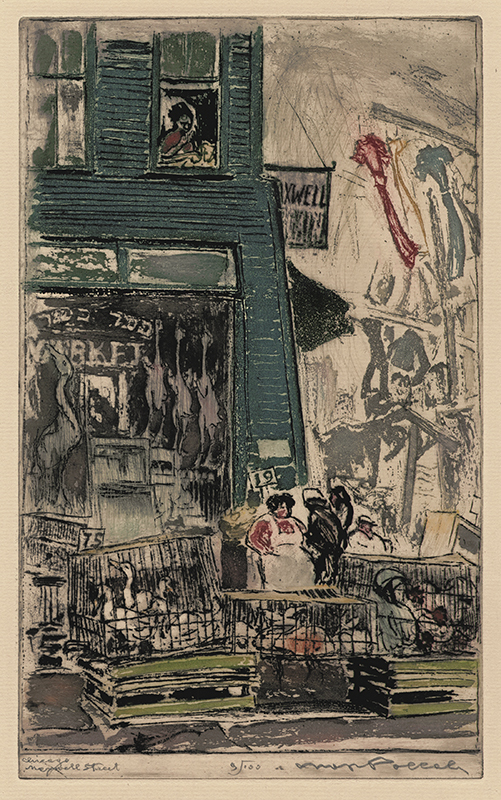
19th, 20th & 21st Century Fine Prints
707-546-7352 · fax 707-546-7924 · web: www.annexgalleries.com · email: artannex@aol.com
Chicago - Maxwell Street by Max Pollak

Chicago - Maxwell Street
Max Pollak
Chicago - Maxwell Street
Max Pollak
1886 - 1970 (biography)Max Pollak used a loose, active etched lines and areas of color aquatint, applied a la poupeé, to capture a glimpse of a Chicago institution, Maxwell Street. He selected a corner butcher shop with cages of live geese and rabbits, neighbors, and hints of rambling architecture in the background.
Wikipedia provides a description of Maxwell Street:
It was named for Dr. Philip Maxwell. It was originally a wooden plank road that ran from the south branch of the Chicago River west to Blue Island Avenue. The earliest housing was built by and for Irish immigrants who were brought to Chicago to construct the first railroads. It continued to be a "gateway" neighborhood for immigrants and others, including Greeks, Bohemians, Russians, Germans, Italians, African Americans and Mexicans...
The Original Maxwell Street Market was an impromptu ghetto market established in the late 19th century by newly arrived Jewish residents from Eastern Europe. A Sunday-only affair, it was a precursor to the flea market scene in Chicago. The market was officially recognized by the city in 1912. It is notable as the location of the celebrated Maxwell Street Market and the birthplace of Chicago blues and the "Maxwell Street Polish", a sausage sandwich...
By the time of its demise (1994) it occupied approximately nine square blocks which was centered at Maxwell and Halsted Streets and stretched from Roosevelt Road to 16th Street. Although there were many fine stationary department stores located in the area, the most notable feature was its open-air market. There one could buy almost anything, new or secondhand, legal and illegal, even though the old Chicago Police Academy on O'Brien Street was adjacent to it...
